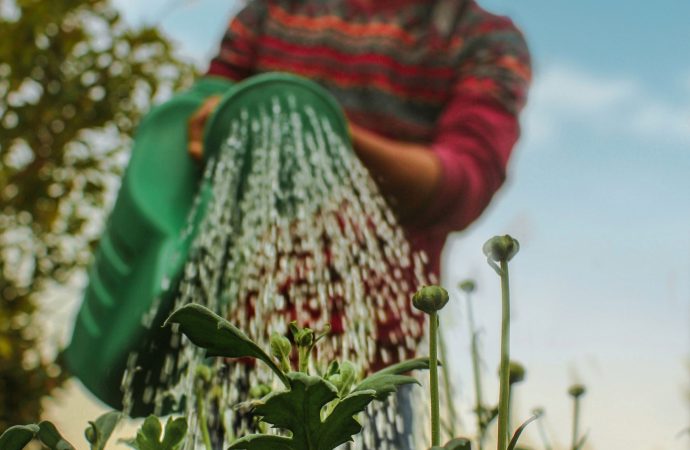Are you tired of feeling guilty about your yard’s impact on the environment? It’s time to switch to sustainable landscaping! Maintaining a beautiful and eco-friendly yard is easier than you think. With the right tools, preparation, and planting techniques, you can enjoy a lush green space while also reducing your carbon footprint. In this blog
Are you tired of feeling guilty about your yard’s impact on the environment? It’s time to switch to sustainable landscaping! Maintaining a beautiful and eco-friendly yard is easier than you think. With the right tools, preparation, and planting techniques, you can enjoy a lush green space while also reducing your carbon footprint. In this blog post, we’ll share tips for choosing the right tools, preparing your yard for landscaping, planting a sustainable grass lawn, and maintaining it in an environmentally conscious way. Let’s get started on creating a beautiful space that both you and nature will love!
Choosing the Right Landscaping Tools
Choosing the right landscaping tools is crucial for maintaining a sustainable and eco-friendly yard. In order to reduce your carbon footprint, it’s important to invest in hand tools instead of gas-powered ones. Manual tools like rakes, shovels, and pruning shears are not only more environmentally friendly but also quieter and easier to use.
When selecting your gardening equipment, consider opting for products made from recycled or sustainably sourced materials. You can find garden hoses made from recycled plastic or compost bins that are constructed with sustainable wood.
Another factor to keep in mind when choosing the right landscaping tools is durability. Investing in high-quality products that will last longer means less waste in the long run. Look for well-made gardening gloves, watering cans, and other essential items that will withstand wear and tear over time.
Don’t forget about ergonomic design when shopping for landscaping tools! Opting for equipment with comfortable handles or adjustable features can make a big difference when it comes to preventing physical strain while working in the yard. By choosing thoughtfully designed gardening gear, you’ll be able to maintain both an eco-friendly outdoor space as well as taking care of yourself!
Preparing Your Yard for Landscaping
Before jumping into the exciting part of planting and designing your yard, it’s important to make sure you are properly preparing the space for landscaping. This will not only ensure a successful project but also help maintain a healthy and sustainable yard.
The first step is to assess your soil type and quality. Different plants thrive in different types of soils, so it’s important to know what kind of soil you have before selecting which plants or grasses to plant. You can test your soil by purchasing an inexpensive testing kit from a garden store or contacting a local extension office.
Next, remove any weeds or unwanted vegetation from the area where you plan on landscaping. Depending on the size of your yard and amount of weeds present, this could be done manually with hand tools or through chemical weed control methods.
After clearing out any unwanted growths, consider adding organic matter such as compost or aged manure to improve soil structure and fertility. This addition will provide essential nutrients for new plants while improving drainage and water retention capabilities.
Consider creating borders around garden beds using edging materials like bricks or stones to prevent erosion and separate areas for different types of flowers or vegetables.
By completing these preparatory steps before beginning construction on landscaping projects, homeowners can set themselves up for success in achieving their desired results while also maintaining an eco-friendly environment in their yards.
Planting a Sustainable Grass lawn
Planting a Sustainable Grass Lawn
A beautiful green lawn is the cornerstone of most yards. However, traditional lawns can be extremely water-intensive and require frequent use of chemical fertilizers and pesticides. To create an eco-friendly yard, consider planting a sustainable grass lawn.
The first step in creating a sustainable grass lawn is to choose the right type of grass seed. Look for varieties that are native or adapted to your region as they will require less watering and maintenance overall. Additionally, seek out drought-tolerant strains that can withstand dry periods without needing constant irrigation.
When it comes time to plant your new lawn, make sure you prepare the soil correctly. Tilling the soil before planting can help improve drainage and reduce runoff while also providing nutrients that will promote healthy growth.
Once your new grass has been planted, avoid using synthetic fertilizers or chemicals which have negative impacts on both human health and the environment. Instead, opt for natural alternatives such as compost or organic fertilizer which provide essential nutrients without the harmful side effects.
Planting a sustainable grass lawn requires some extra effort upfront but will pay off in spades when it comes to reducing water usage while also promoting healthier soil and plants in your yard over time!
How to Maintain a Beautiful and Eco-Friendly Yard
Maintaining a beautiful and eco-friendly yard is not only about the initial effort you put into designing it, but also about how well you maintain it. To ensure that your yard remains healthy and stunning for years to come, here are some tips on maintenance:
Firstly, water your plants efficiently. This means watering them deeply but infrequently during dry periods instead of frequently with shallow amounts of water. Additionally, use a drip irrigation system or soaker hoses to reduce evaporation.
Secondly, mow your lawn regularly and at the right height depending on the grass species. Longer grass helps retain moisture in the soil which reduces water usage and promotes healthier roots.
Thirdly, remove weeds by hand or using natural weed killers such as vinegar or boiling water rather than chemical pesticides which can harm beneficial insects.
Fourthly, compost organic materials from yard waste such as leaves or trimmings to create nutrient-rich soil amendment for your garden beds.
Choose plants that are native to your region because they are adapted to local weather conditions and require less maintenance compared to exotic species.
By following these simple steps towards maintaining an eco-friendly yard, you’ll be able to enjoy its beauty while contributing positively towards the environment!
Conclusion
Maintaining a beautiful and eco-friendly yard might seem like an overwhelming task at first but it is definitely achievable. By choosing the right landscaping tools and preparing your yard properly, you can create a sustainable landscape that not only looks good but also helps to protect the environment.
Remember to choose native plants and grasses as they require less water and are better adapted to your local climate conditions. Also, consider incorporating natural elements such as rainwater harvesting systems or compost bins into your yard design for maximum sustainability.
By following these simple tips for sustainable landscaping, you can do your part in conserving our planet’s resources while still enjoying a beautiful outdoor space that you can be proud of. So go ahead and get started on creating your very own eco-friendly oasis today!























Leave a Comment
Your email address will not be published. Required fields are marked with *